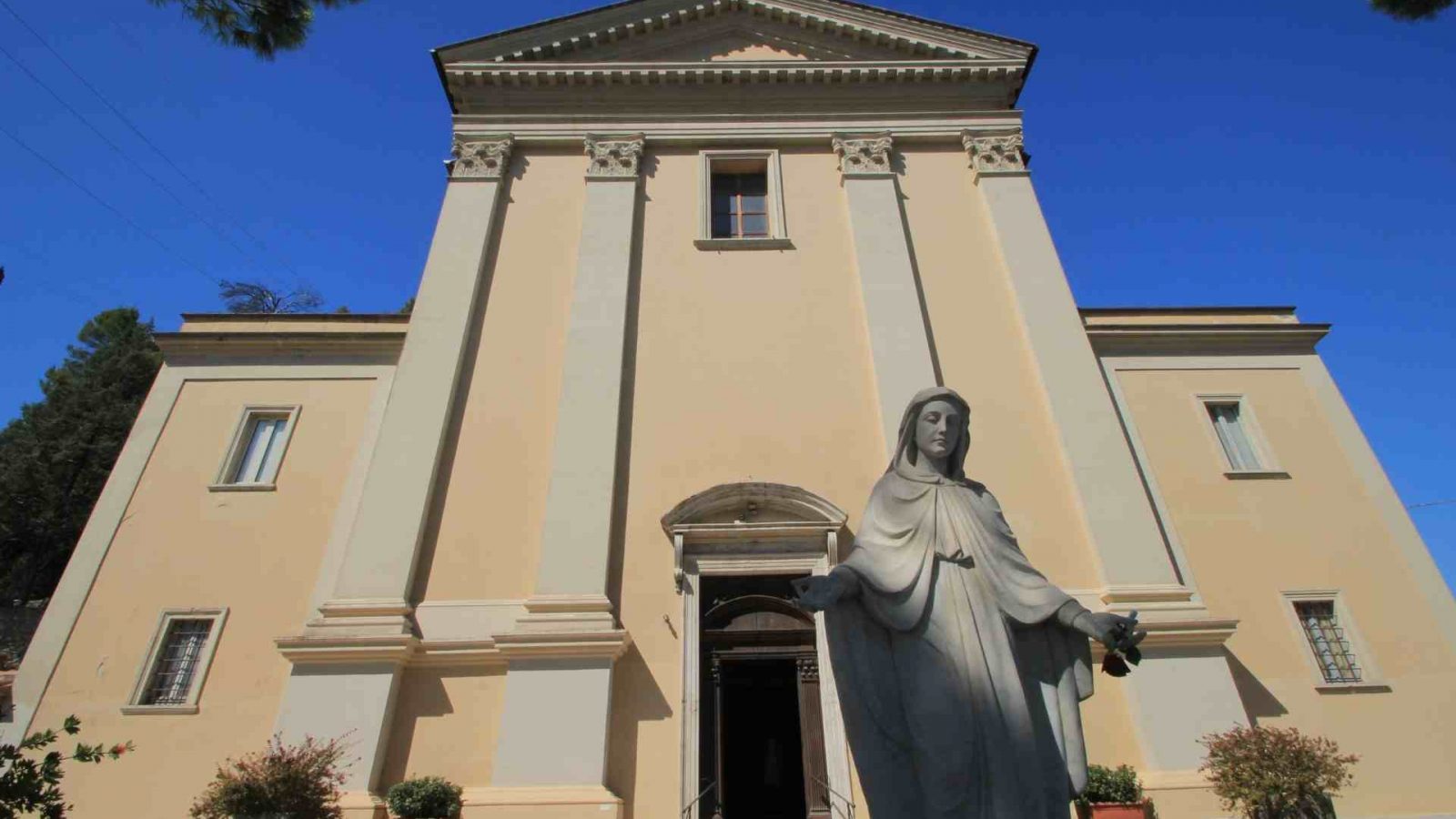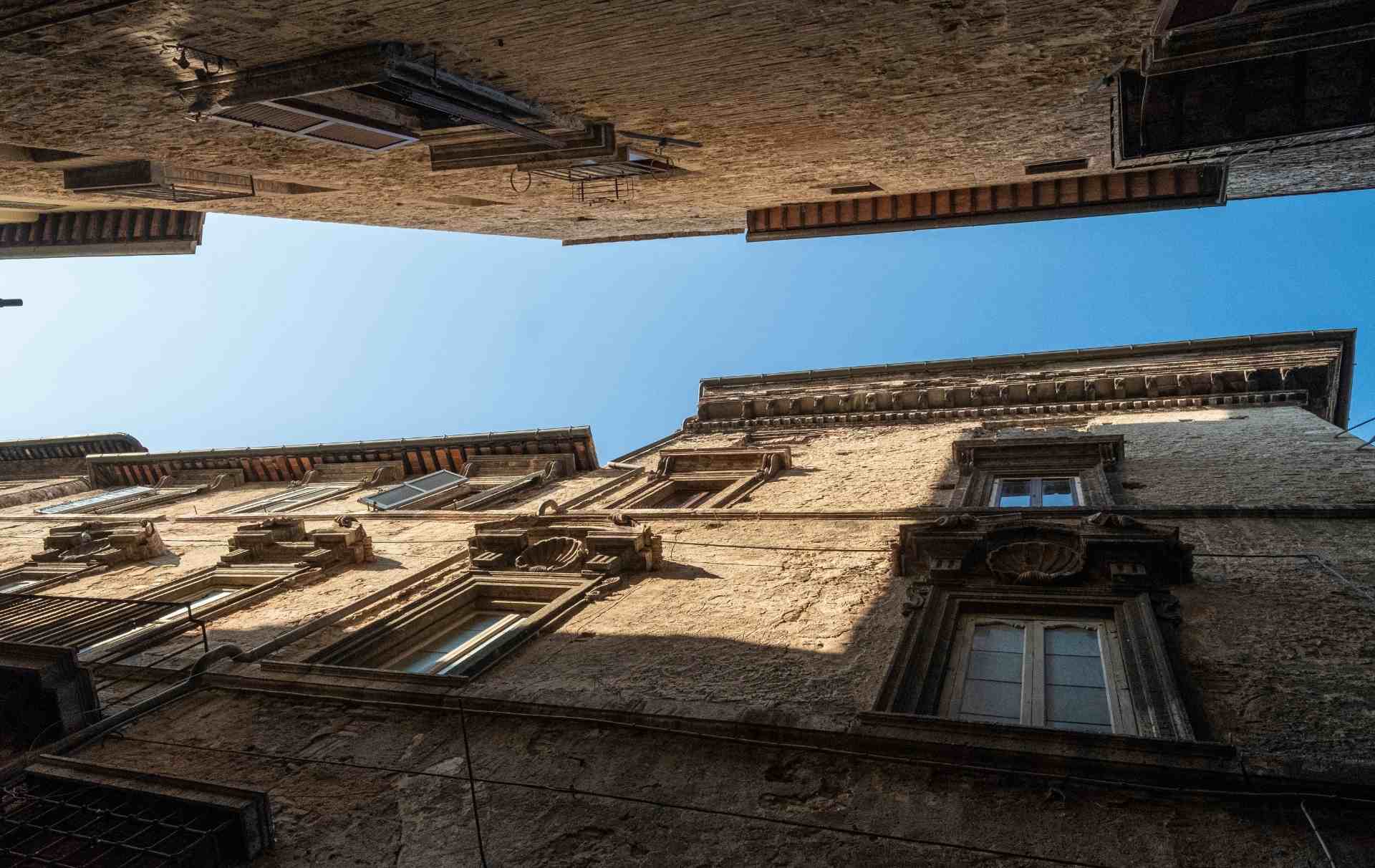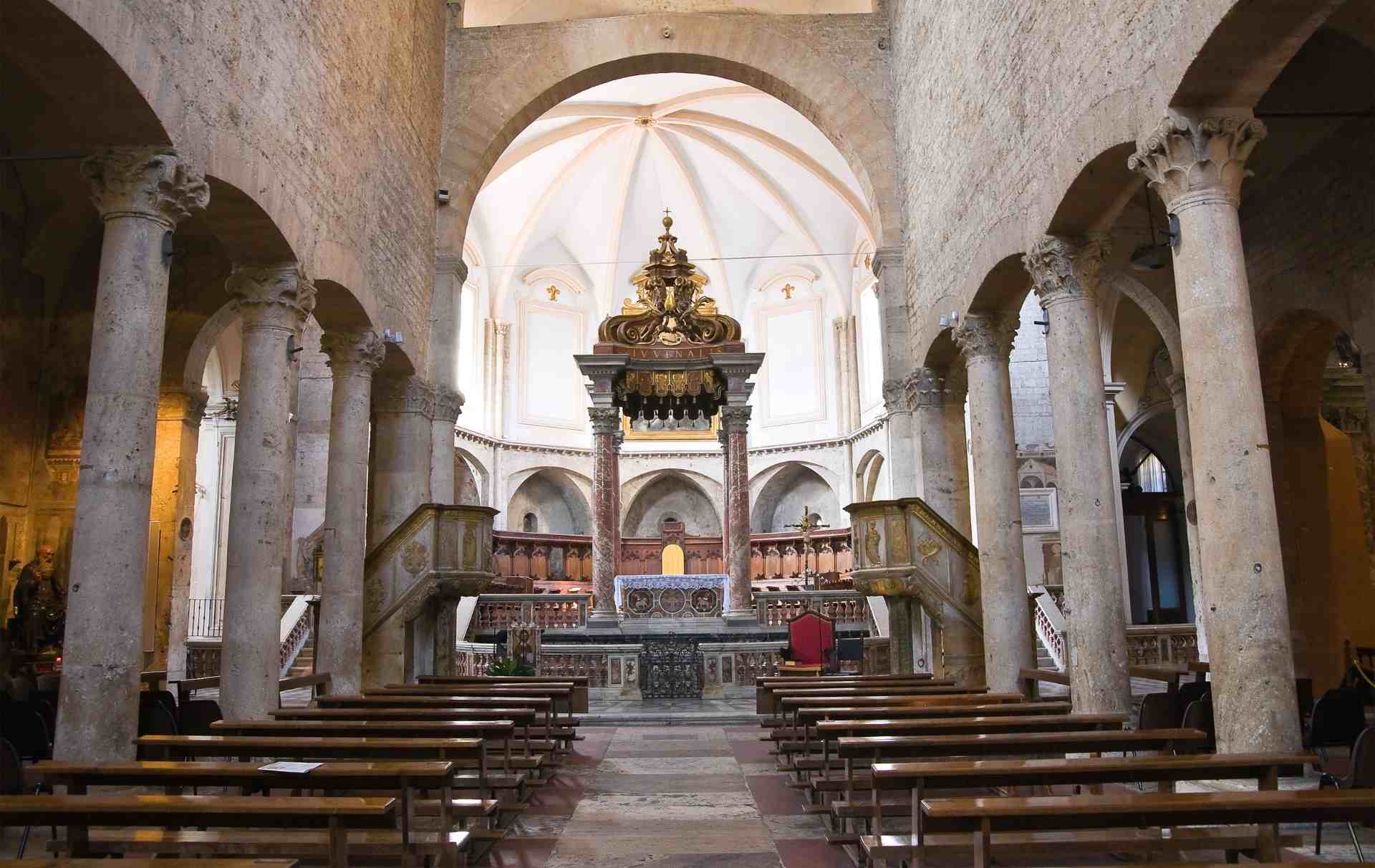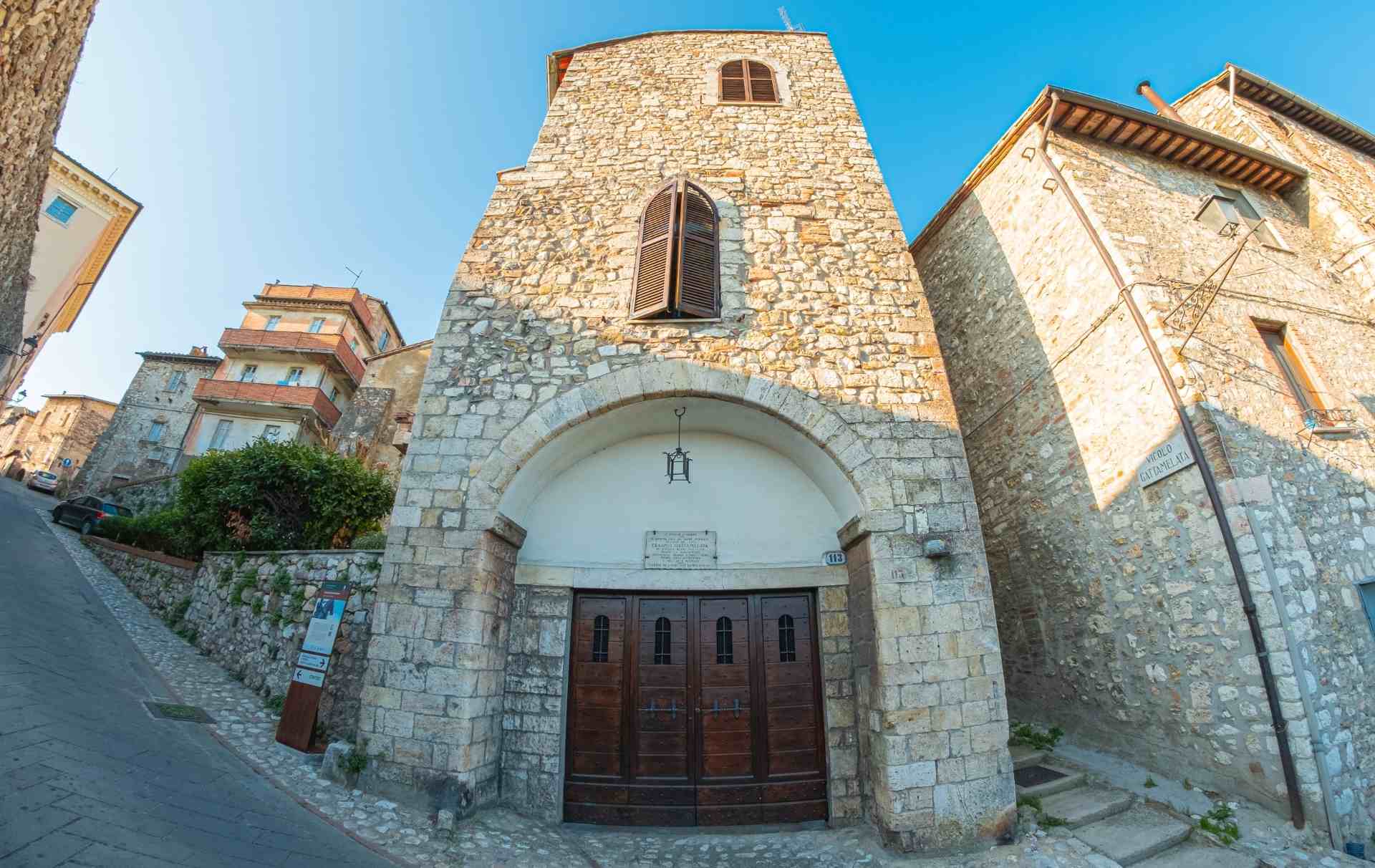The Sanctuary of Madonna del Ponte rises at the foot of the mountain Croce , near the remains of the Augustus Bridge which gave it the name.
The Sanctuary of Madonna del Ponte in Narni Scalo.
The history is linked to that of Angelo Fanelli, a inhabitant of Narni who in 1714, inside a cave, discovered the image of the Virgin Maria.
The spread of the cult was such that Francesco Saverio, bishop of Narni, decided to build a church to whose project was given to Giovan Battista Giovannini of Milano, who started the works in 1716 and ended after 10 years.
The church was consecrated in 1728 and soon became the place of pilgrims of all central Italy.

The architecture of the church which preserves the Sacred Cave.
The outside of the sanctuary seems really simple and has a facade with a big tympan, two couple of pillars and a window placed up and central and , next to, the tower bell.
The parvis, semicircular, is characterized by two large staircases and in the center, in 1950 was placed a marble statue, depicting the Madonna.
The sanctuary.
The interior is a true example of eighteenth-century architecture: once round for two thirds, ends with two very large arches from which develops the drum that supports the dome, under which there is a medallion with the initials of the Madonna and two stucco angels holding the inscription in capite eius corona stellarum duodecim (or “on his head a crown of twelve stars”)
In the two lateral chapels there are some beautiful canvases , dating around the first half of 1700.
In the left chapel there are two canvases; one represents the Blessed Lucia Broccadeli of Narni in order to receive the heart from the God , while the other represents Santa Teresa d’Avila who is pierced with a dart by the angel.
In the right chapel , the biggest canvas represents San Giuseppe, Jesus Child and San Domenico, father and mystic model of the religious life of the Blessed Lucia. The small canvas, above, represents the ecstasy of San Francesco.
The Sacred Cave.
The Sacred Cave is an artificial cave made in roman concrete, probably a ruin of one of the arches or buttresses which supported the Via Flaminia, after passing the Augustus Bridge.
The outside space is decorated by a frontispiece which has an impressive baroque style complex of statute and height-reliefs in white stucco of the sculptor Michele Chiesa from Como.
The frescoes on the back wall, dating the twelfth century, are probably work made by the benedictine monks who, guests of the near Abbey of San Cassiano, were used to going in isolated places or caves to meditate.
Next to the different saints, the Madonna with Child who gave the name to the sanctuary.
The celebration of Madonna del Ponte.
From 1914, the century of the discovery of the effigy of the Virgin, is celebrated from September 8 – Nativity of Maria – until the next Sunday, a suggestive celebration which is worth it to live.
The Way of the Franciscan Protomartyrs.
The passage at the sanctuary is part of the fourth stage of the The Way of the Franciscan Protomartyrs – from Narni to San Gemini.
Sanctuary of Madonna del Ponte
Via del Santuario, 11, 05035 Narni TR
Web: madonnadelpontena.it
Phone. 0744 737747
The Sanctuary of Madonna del Ponte is open during the day.
It is suggested to park the car near the Sanctuary, in Via del Santuario.
Discover Narni.
Continue to walk with us discovering what to see inside the walls of Narni.
Or discover the points of interest of Narni and of its territory:

Scotti Palace
Scotti Palace, is one of the most impressive civil architectures in Narni, rises on the west side of Via Mazzini, close to Santa Maria Impensole.

The central aisle
Entering the Cathedral of Narni, from piazza Cavour it’s suggested to go in the center to look at the building in all of its elements:

House of Erasmo Gattamelata
The House of Erasmo Il Gattamela, where born one of the biggest captains of fortune of the Middle-Age, is along the walls of the town


